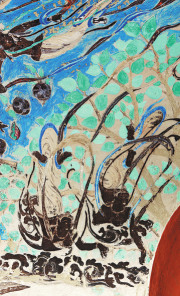Ancient hub offers inspiration for future
 0 Comment(s)
0 Comment(s) Print
Print E-mail China Daily, October 12, 2018
E-mail China Daily, October 12, 2018

Belt and Road
The new Silk Road Economic Belt and 21st Century Maritime Silk Road, which are also known collectively as the Belt and Road, is a new initiative proposed by the Chinese government for promoting the economic and cultural prosperity of countries along the routes.
During the past few years, Moutai has found great opportunities and ample space for growth through its engagement with the Belt and Road countries and regions.
We have discovered the strength of culture when promoting our brand to the world. We hope in the future that more countries along the Belt and Road can foster more cultural exchanges, making their unique cultures better known to the world. We expect that more win-win collaborations can be developed, based on openness and inclusiveness.
This year marks the 40th anniversary of China's reform and opening-up. During the past four decades, China has made miraculous achievements in both the economic and social fields thanks to the concerted efforts of the Party, the government and the people. Great changes have taken place in this ancient country. Our land has offered a home to the operations of the world's great companies such as Microsoft, Apple and Coca-Cola. Through learning their advanced operational skills and their corporate cultures, a great number of great domestic companies have emerged in the country, such as Tencent, Alibaba and Huawei.
Samuel P. Huntington, the US political scientist and author of the Clash of Civilizations, stated in the 1990s that the conflict between cultures would be the biggest threat to world peace in the future.
However, we might find better solutions to the pressing concerns of the world by learning from the cultural prosperity of Dunhuang and the booming commerce brought by the ancient Silk Road over two millenniums.
Dunhuang was the intersection of three main silk routes in ancient times. As a hub of commerce, it welcomed Buddhism - a foreign religion from India - from the first century AD. While Buddhists used this city as their main stop to spread the religion to the rest of China, they left behind them rich, brilliant cultural legacies, such as the Mogao Caves, as well as a great number of Buddhist manuscripts, murals and statues. As a result, the city at one point became the hub of Buddhism in China.






Go to Forum >>0 Comment(s)